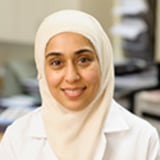
Beginning in medical school, we are taught how to take a patient’s history in a very particular and prescribed manner. With the advent of the EMR system, our notes have become more formulaic, with boxes that we must check off prior to proceeding to the next section of history-taking. Even the social history — that unique opportunity for discovery about a patient — is very structured. Are you sexually active? With men, women, or both (the least favorite question for all medical students, I am sure)? This rigid fact-finding mission leaves little room for what is perhaps the most important part of a patient’s visit with their doctor: a conversation.
We have lost the art of history-taking that comes from conversing with the patient. We have become focused on checking all the boxes so that we can be compliant with documentation and bill at the appropriate level. Unfortunately, we then forget that our interactions are not interrogations. As physicians, we are here to listen and to talk. One study showed that doctors listen to their patients a median of 11 seconds before interrupting them, but who can blame us? Many times, we have just 15 minutes per patient, and charting and billing loom over our heads throughout the entire patient visit. If one question from us can magically elucidate why the patient is here so we can initiate the appropriate workup, then interrupting our patients is justified.
Or is it?
When I first started practicing as an obstetrician/gynecologist, I was completely overwhelmed by the number of patients I was seeing and the amount of paperwork I had to do for each patient. I would spend hours charting at home, and very quickly became angry and embittered by the constant demands placed on my time in the world of modern medicine. By the end of that first year, feeling increasingly dissatisfied with my career, I resolved to forget about the onerous EMR system. I was determined to shape the patient visit the way I envisioned it.
I’ve been in practice for four years now and for many of my patients, I have been their ob/gyn for all of their pregnancies. This continuity of care has provided an incredible amount of career satisfaction for me. I’ve gotten to know my patients in an intense and deeply personal way, particularly because many of them are around the same age as I am. When I graduated from residency, I had a 9-month-old baby and after being in practice for a year, I became pregnant with my second child. My patients and I connected over the difficulties of finding childcare, the discomforts of pregnancy, the sleep deprivation, and the terrifying thought of having both a toddler and a newborn. We shared stories of parenting failures, pediatrician recommendations, and the merits of different breast pumps. My office was a safe space where they could share their frustrations with their partners, their concerns about breastfeeding, and the stress associated with being a working parent.
There were no EMR check boxes for these conversations; they occurred organically when my patients opened up and when I took the time to listen to them. Through these conversations, I learned to recognize when a patient was exhibiting signs of postpartum depression or when someone needed a referral for therapy or a lactation consultant. The art of conversing produced valuable connections between myself and my patients that in turn led to interventions that were medically appropriate and necessary. While I still documented all these interactions in an imperfect EMR, I worried less about documenting every single sentence, which freed me to focus on my patients for the entirety of their visit.
Taking a patient’s history is the key to building relationships with our patients. It provides us with valuable information about why the patient is with us in the first place, which we subsequently use to determine which interventions are needed to help them achieve their best health outcomes. Remembering the importance of history-taking can help us view it again for what it is: an art and a conversation.
Dr. Huma Farid is an obstetrician/gynecologist at the Beth Israel Deaconess Medical Center in Boston.







